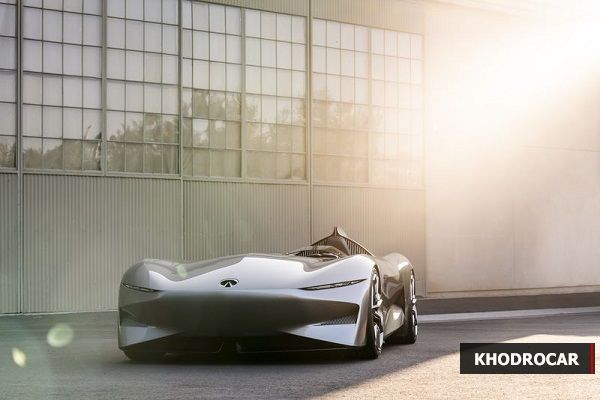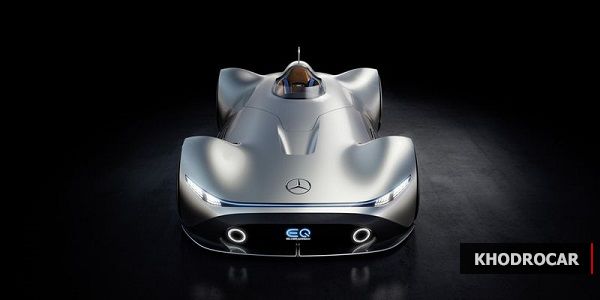Automakers are tapping nostalgia to promote electric cars
Automakers around the world have spent the last few years promoting hybrid and electric drivetrain technology in order to show how they’re thinking about the future. But lately, some of them are looking back to the past to promote these new technologies.
Khodrocar - Friday was the first day of the annual Pebble Beach Concours d’Elegance, one of the ritziest car shows in the world. Staged along the California coast, the opening ceremonies featured appropriately outlandish announcements (like the $5.78 million 1,500-horsepower Bugatti Divo). But a few companies also went right for the nostalgia jugular.
Infiniti kicked off the show with its new Prototype 10, an all-electric racer that the company says "recaptures the spirit of early speedsters for an era of electrified performance.” The single-seater arrow of a car is equal parts retro and neofuturistic, and is Infiniti’s way of doubling down on the early 20th-century vibes it tapped for the Prototype 9, which the company unveiled at Pebble Beach last year. While both cars look like something out of the 1930s, they exist as a reminder that Infiniti has plans to switch its entire lineup to electric power of some kind by 2021.
Infiniti kicked off the show with its new Prototype 10, an all-electric racer that the company says "recaptures the spirit of early speedsters for an era of electrified performance.” The single-seater arrow of a car is equal parts retro and neofuturistic, and is Infiniti’s way of doubling down on the early 20th-century vibes it tapped for the Prototype 9, which the company unveiled at Pebble Beach last year. While both cars look like something out of the 1930s, they exist as a reminder that Infiniti has plans to switch its entire lineup to electric power of some kind by 2021.

Mercedes-Benz followed Infiniti with an early-1900s grand prix style car of its own, named the EQ Silver Arrow. Meant to promote Mercedes-Benz’s upcoming all-electric EQ sub-brand of cars, the concept employs an 80kWh battery, which the company imagines would get about 250 miles of range, all with about 738 horsepower.
One reason for this trend might be the freedom that comes with electric drivetrain technology. "An electric car is so much simpler to build” than one with an internal combustion engine, says Doug Betts, who leads JD Power’s global automotive division. There are so many moving parts in an internal combustion engine that not only need to be properly designed and built, but also monitored, he says.

For example, Betts says, a computer has to monitor every one of the thousands of tiny explosions that power an engine to make sure that they all go off without a hitch. "All that stuff goes away with electric vehicles,” he says. This leaves designers — whether they’re at Mercedes-Benz or Kalashnikov — more room and time to play. But despite their simplicity, EVs still cost a lot of money to make because the cost of the battery is still high, Betts says. Since automakers already work with pretty thin margins, this might be the reason we haven’t seen more of these comparatively frivolous projects crop up.
Tapping nostalgia is a tried and true move as a new technology starts to take hold. After the camera started its shift to digital image sensors, more than one company saw the opportunity to breathe new life into popular old designs. Now, some of the most striking digital cameras in the world are ones that carry more classic design elements, even while the tech inside is as new as can be.
There are other reasons why automakers may never lean too heavily into this idea. For one thing, older cars tend to be bigger, heavier, and less aerodynamic. The increase in the industry’s use of lighter materials (like aluminum) might help mitigate some of those drawbacks should a company try to bring back a classic, but weight and drag are important factors in squeezing as much range out of a car’s battery pack as possible. The auto industry is also fairly risk-averse. Try to sell a car that was previously abandoned, for whatever reason, and you might discover there was merit to the decision in the first place.
But whether automakers embrace selling electrified versions of older cars or not, don’t be surprised if they continue to exploit nostalgia as the industry shifts away from the internal combustion engine. With political and environmental pressures pushing the industry toward electric technology, and adoption still fairly low, these companies figure they can sell the future by playing customers the greatest hits. If the reaction of the crowds at Pebble Beach — and really, most of the past year’s auto shows — are any indication, it’s a strategy that car fans are more than happy to oblige.
Source: The verge
Latest News


